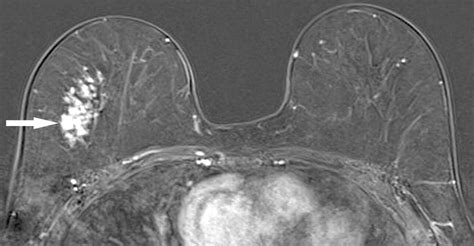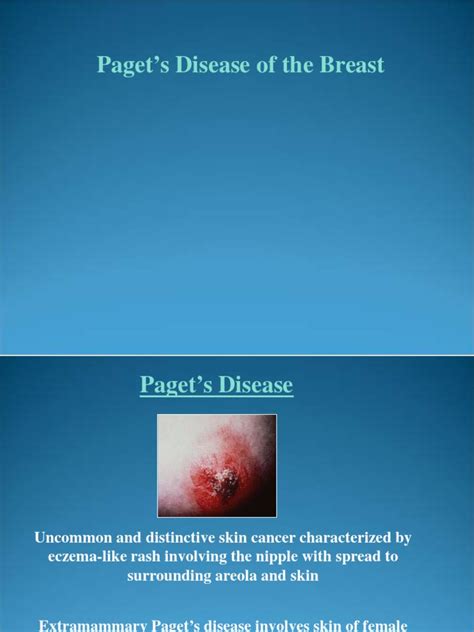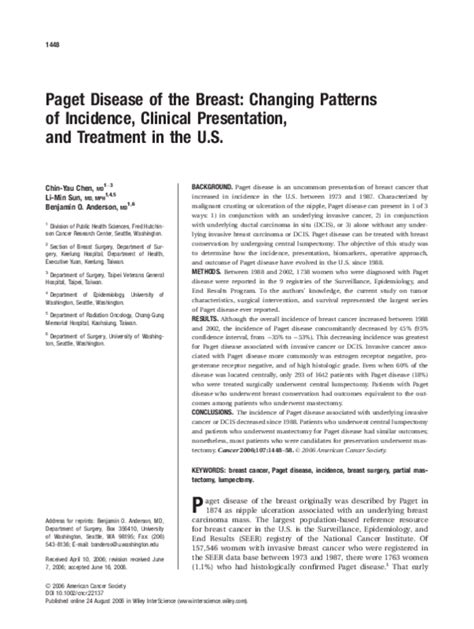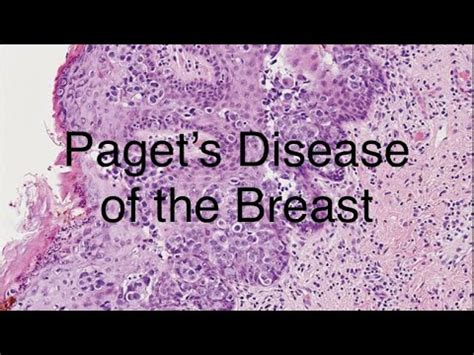Intro
Paget's disease of the breast is a rare form of breast cancer that primarily affects the skin of the nipple and, sometimes, the areola. It is essential to understand the basics and nuances of this condition to promote early detection and treatment. Here are some key aspects of Paget's disease of the breast that everyone should know.
The importance of being aware of Paget's disease of the breast cannot be overstated. Given its rarity and the fact that it often mimics benign conditions, there's a significant risk of delayed diagnosis. Delayed diagnosis can lead to more severe outcomes, making it crucial for both healthcare providers and the general public to be informed. Early detection significantly improves the prognosis for individuals with Paget's disease, similar to other forms of breast cancer.
Understanding Paget's disease of the breast involves recognizing its symptoms, risk factors, and how it differs from other breast conditions. The disease typically presents with changes to the nipple-areola complex, such as eczema-like rash, itching, redness, and sometimes discharge. These symptoms can be mistaken for benign skin conditions, leading to delays in seeking medical attention. Moreover, Paget's disease is often associated with underlying ductal breast cancer, either in situ (DCIS) or invasive, which complicates its management and prognosis.
Introduction to Paget's Disease of the Breast

Symptoms and Diagnosis

Diagnosis involves clinical examination, imaging studies such as mammography and ultrasound, and biopsy. The biopsy is crucial as it helps confirm the presence of Paget cells.
Treatment Options

Risk Factors and Prevention

Prevention strategies are similar to those for other forms of breast cancer and include regular breast self-examinations, annual clinical breast exams, and mammography as recommended by healthcare providers.
Living with Paget's Disease of the Breast

Support from family, friends, and support groups can also play a significant role in coping with the disease. Additionally, staying informed about the latest developments in treatment and management can help individuals feel more in control of their condition.
Psychological Impact
The psychological impact of a breast cancer diagnosis, including Paget's disease, should not be underestimated. Feelings of anxiety, fear, and depression are common. Seeking help from mental health professionals can be beneficial in managing these emotions and improving overall well-being.Future Directions
Research into Paget's disease of the breast and other forms of breast cancer continues to evolve. Advances in genetic testing, targeted therapies, and immunotherapy hold promise for improving treatment outcomes and quality of life for individuals with breast cancer.What are the first signs of Paget's disease of the breast?
+The first signs often include a rash or redness on the nipple and areola, itching, and sometimes discharge or bleeding from the nipple.
Is Paget's disease of the breast always associated with underlying breast cancer?
+No, while Paget's disease of the breast is often associated with underlying ductal carcinoma in situ (DCIS) or invasive breast cancer, it can occur without these conditions.
Can Paget's disease of the breast be cured?
+Early detection and appropriate treatment can significantly improve outcomes. The prognosis varies depending on the presence and extent of any underlying breast cancer.
In summary, Paget's disease of the breast is a rare and unique form of breast cancer that requires awareness, prompt diagnosis, and tailored treatment approaches. By understanding its symptoms, risk factors, and treatment options, individuals can better navigate their diagnosis and work towards optimal outcomes. We invite readers to share their experiences, ask questions, and seek support from healthcare professionals and support groups to foster a community of care and understanding around Paget's disease of the breast and other breast cancer types.
